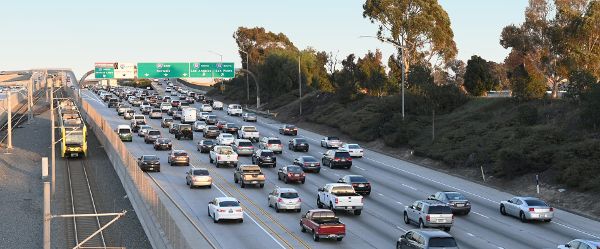Digital services company Conduent’s transportation business unit will continue to help ease travel across Los Angeles County in California by modernizing the tolling system on the region’s ExpressLanes with the latest in automated technologies.
The new eight-year contract extends Conduent’s six-year relationship with the Los Angeles County Metropolitan Transportation Authority (Metro), and the technology upgrades are expected to save drivers time by reducing congestion, while also improving safety on both the I-10 and I-110 corridors. The company’s new tolling platform will enable Metro to use enhanced analytics capabilities and build on the ExpressLanes project along the two busy interstates. The upgrades will include the installation of overhead scanners and multi-protocol, automatic vehicle identification equipment that will correspond with transponders installed on commuters’ vehicles. These upgrades will help to increase accuracy and the overall performance of the ExpressLanes.
Metro and Conduent (formerly Xerox’s transportation business) originally converted the LA County’s High-Occupancy Vehicle lanes (HOV) to High-Occupancy Toll (HOT) lanes in 2012 as part of the ExpressLanes initiative. To help ease congestion, the scheme gives solo drivers the choice of paying a toll to travel on the two high-traffic corridors, with carpools, vanpools, motorcycles and buses still able to travel for free. In most HOT applications, the pricing is adjusted based on congestion calculated on the roadway as a whole. For the Metro ExpressLane project, Conduent divided the two separate corridors into 21 different segments of 2.5 to 4.5 miles (4 to 7.2km) each, and applied dynamic pricing algorithms to each segment. This approach took into account the fact that drivers were entering and exiting along the interstates, and enabled the system to maximize the use of every possible car on the road for better congestion management.
For the system to work effectively, Conduent’s Vector toll system, the traffic system, the violation processing system, traffic overview cameras, dynamic messaging signs (DMS) and tolling point notification lights were integrated for a cohesive flow of data. While traditional HOT lanes send congestion/pricing recommendation analytics every 30 minutes or every hour, for the Metro ExpressLanes, this is collected every five minutes, with the ultra-fast analytics offering true ‘dynamic pricing’. Using a combination of FasTrak RFID (Radio-Frequency Identification) transponders and ALPR (Automatic License Plate Recognition) camera technologies for non-transponder-equipped vehicles, the ExpressLanes system has achieved minimum speeds of 45mph (72km/h) 100% of the time during peak periods, exceeding Metro’s required 90% target. Under the new contract, the existing tolling equipment will be upgraded to the latest technologies.
Mick Slattery, Conduent Transportation CEO, commented, “Metro’s sustained trust in us speaks to our shared commitment in providing citizens with a safe transportation experience by using the latest digital interaction technology.”





